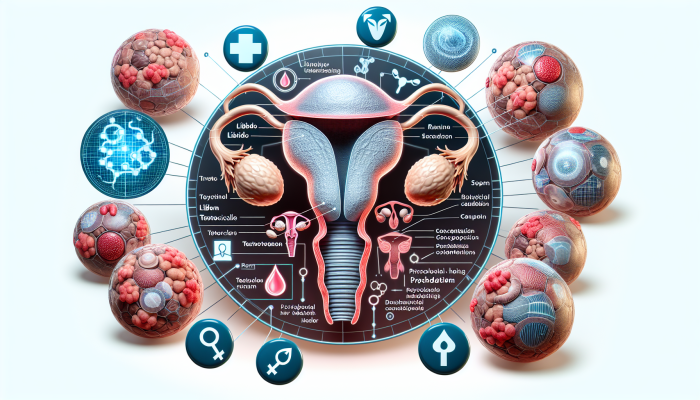Unlocking Optimal Health: The Critical Role of Testosterone Testing Standards
Testosterone is a vital element in maintaining hormonal health, significantly affecting both men and women. This essential steroid hormone plays a crucial role in a variety of functions, including muscle growth, sexual desire, bone density, and psychological well-being. Ensuring that you maintain testosterone within an optimal range can dramatically enhance your quality of life, influencing aspects such as energy, mood, and mental clarity. Thus, acquiring a comprehensive understanding of testosterone testing standards is vital for identifying hormonal imbalances and improving your overall health and well-being.
Essential Insights on the Impact of Testosterone on Overall Health

The majority of testosterone production occurs in the testicles for men, whereas women produce it in smaller amounts through the ovaries. Although often associated with male traits such as muscle mass and body hair, testosterone is critical for various bodily functions in both sexes. Fluctuations in testosterone levels can have substantial effects on libido, sperm production, and cognitive abilities such as concentration and focus. Low testosterone can result in health complications like depression, chronic fatigue, and diminished sexual performance, highlighting the necessity for balanced hormone levels.
In addition, testosterone significantly impacts psychological health. Research indicates that adequate testosterone levels foster emotional stability and resilience to stress. This reinforces the importance of monitoring and understanding your testosterone levels, particularly if you observe notable changes in your emotional or physical health.
Exploring the Development of Testosterone Testing Standards
The testosterone testing standards are determined through comprehensive clinical research conducted on healthy individuals across diverse demographics. These studies take into account various factors, including age, sex, and the specific time of day when the test is conducted. It is important to note that testosterone levels vary throughout the day, generally peaking in the early morning. Therefore, laboratories adjust their standards to reflect these natural fluctuations, ensuring precise evaluations of your hormonal health.
Furthermore, it is essential to acknowledge that reference ranges may differ across laboratories due to variations in testing methodologies and the populations they examine. As a result, a test outcome considered “normal” in one laboratory might not hold the same status in another. This reality underscores the importance of consulting a healthcare provider to accurately interpret your results, taking into account your unique situation and medical history.
Understanding the Disparities in Testosterone Testing Standards Across Different Laboratories
Discrepancies in testosterone testing standards among various laboratories can stem from several factors. Each lab may employ different testing methods that vary in sensitivity and precision. For instance, some laboratories might utilize immunoassay tests, while others may rely on advanced techniques like liquid chromatography, leading to differences in results.
Moreover, the reference populations used to establish these norms can significantly influence the resulting values. If a laboratory primarily tests individuals from a specific age group or ethnic background, its norms may not accurately represent the broader population. Therefore, it is crucial to obtain test results from a reputable laboratory and consult with a healthcare professional to discuss the implications of your results, considering your medical history.
Essential Guidelines for Deciphering Your Testosterone Testing Results

Grasping how to interpret your testosterone test results may initially appear overwhelming; however, it becomes manageable when you have a clear understanding of the established standards and their implications. Generally, testosterone test outcomes are expressed in nanograms per deciliter (ng/dL) and can vary considerably based on numerous factors, including age and sex.
A Comprehensive Guide to Analyzing Your Testosterone Test Results
The initial step in understanding your testosterone test results involves comparing them to the testosterone testing standards. Although <a href="https://limitsofstrategy.com/blood-exams-in-covent-garden-private-and-reliable-testing/">normal testosterone levels</a> can fluctuate, men typically fall within the range of 300 to 1,000 ng/dL, while women usually have levels between 15 to 70 ng/dL. If your results fall outside these established ranges, further investigation into the underlying causes may be warranted.
Additionally, it is essential to assess your results in the context of your overall health. Testosterone levels that may seem low for one person could be entirely normal for another, influenced by factors such as age, health status, and personal circumstances. Engaging with a healthcare professional can help you evaluate your results comprehensively and determine if further testing or intervention is necessary.
Recognizing the Effects of Low Testosterone Levels on Overall Health
Low testosterone levels, clinically referred to as hypogonadism, can lead to a wide range of significant health complications. Symptoms may vary greatly but commonly include decreased libido, chronic fatigue, reduced muscle mass, and mood swings. If you experience these symptoms, it is advisable to undergo a testosterone test to determine whether your levels are below the normal range.
The causes of low testosterone can be diverse, encompassing underlying medical conditions as well as lifestyle factors. Health issues like diabetes, obesity, or disorders affecting the pituitary gland can significantly impair testosterone production. Additionally, environmental aspects such as exposure to endocrine disruptors or harmful chemicals may also disrupt hormonal balance. A comprehensive medical evaluation is essential for identifying the root cause and devising an appropriate treatment plan.
Health Risks Associated with Elevated Testosterone Levels

On the other hand, elevated testosterone levels can also pose serious health risks. High testosterone levels may be associated with medical conditions such as testicular tumors or the improper use of anabolic steroids. Symptoms of excess testosterone can include acne, increased blood pressure, and mood variability, such as heightened irritability and aggression.
It is crucial to avoid jumping to conclusions based solely on high test results. Consulting with a healthcare professional is vital for evaluating these findings and considering further diagnostic testing to uncover any underlying issues. Additionally, discussing potential risks related to elevated testosterone levels, including cardiovascular complications and other adverse effects, is equally important.
Comprehensive Factors Affecting Testosterone Levels
The levels of testosterone are not fixed; they can be influenced by a multitude of factors. Understanding these influences empowers you to make informed choices regarding your hormonal health and overall well-being.
The Influence of Age on Testosterone Levels
Age is a critical determinant affecting testosterone testing standards. Research indicates that testosterone levels in men begin to gradually decline after approximately 30 years of age. This decline may be slow but can have significant implications for both physical and mental health over time.
In women, although testosterone levels are inherently lower, they too can decrease with age, particularly following menopause. This reduction can result in symptoms such as fatigue, diminished libido, and mood changes. Therefore, it is essential for individuals of all genders to monitor their testosterone levels as they age and seek medical advice if they experience signs of hypogonadism.
The Impact of Lifestyle Choices on Testosterone Levels
Lifestyle choices play a significant role in the maintenance of optimal testosterone levels. Adopting healthy habits, such as a balanced diet, regular physical activity, and adequate sleep, is crucial for sustaining appropriate hormonal levels. For instance, studies have indicated that engaging in physical activity, especially resistance training, can effectively enhance testosterone production.
Conversely, lifestyle risk factors like obesity, a sedentary lifestyle, and chronic stress can disrupt hormonal balance. Elevated stress levels, in particular, can lead to increased cortisol production, which can inhibit testosterone synthesis. By incorporating stress management strategies such as meditation or yoga, alongside a physically active lifestyle, you can significantly support your hormonal health.
The Effects of Medications and Supplements on Testosterone Production
Certain medications can profoundly affect testosterone levels. Drugs such as corticosteroids, opioids, and certain antidepressants may result in reduced testosterone production. If you are currently taking medications and have concerns about your testosterone levels, it is advisable to discuss these concerns with your healthcare provider.
On the other hand, some dietary supplements claim to enhance testosterone levels, including zinc and vitamin D. While some studies suggest these supplements may be beneficial for individuals with deficiencies, it is essential to consult a healthcare professional before starting any supplementation regimen. Often, a balanced approach prioritizing healthy dietary choices and an active lifestyle proves to be the most effective strategy for maintaining optimal hormonal levels.
Recognizing Symptoms and Diagnostic Techniques for Abnormal Testosterone Levels
Identifying the symptoms associated with abnormal testosterone levels is crucial for early detection and timely intervention. This process typically involves a combination of physical examinations and laboratory tests.
Identifying Common Indicators of Low Testosterone Levels
Symptoms of low testosterone levels can vary from person to person, but several common signs may indicate a hormonal imbalance. Chronic fatigue is one of the most frequently reported symptoms. If you notice an unusual drop in energy levels that is not attributable to other factors, it may signify low testosterone.
A decrease in sexual desire is another key indicator. Men may find it difficult to achieve or maintain an erection, while women might experience a loss of interest in sexual activities. Furthermore, loss of muscle mass, increased body fat, and mood fluctuations such as anxiety or depression may also be linked to low testosterone levels.
When to Seek Professional Medical Advice for Testosterone Testing
If you experience persistent symptoms or harbor specific concerns regarding your testosterone levels, it is prudent to consult a healthcare professional. Early evaluation can help identify potential underlying health issues and establish a tailored action plan.
For men over 40 or women approaching menopause, it may be particularly wise to discuss testosterone testing with your doctor, even if you do not exhibit noticeable symptoms. Regular screenings can effectively assist in monitoring your testosterone levels and making informed health decisions.
The Diagnostic Approach for Evaluating Testosterone Levels
The diagnostic process for assessing testosterone levels typically begins with a medical consultation, during which your symptoms and medical history are thoroughly reviewed. If a hormonal imbalance is suspected, your physician may recommend a blood test to measure your testosterone levels.
Testing is generally performed in the morning when testosterone levels are highest to yield the most reliable results. If abnormal results are identified, additional testing may be required to investigate the underlying cause, which could encompass evaluations of pituitary gland function or other hormonal assessments. Accurate diagnosis is critical for developing an effective treatment plan tailored to your unique needs.
Exploring Treatment Modalities and Therapies for Abnormal Testosterone Levels
Once abnormal testosterone levels are identified, various treatment options may be available. The choice of therapy often depends on the underlying cause and individual preferences.
Proven Treatment Strategies for Low Testosterone Levels
Options for managing low testosterone levels may include testosterone replacement therapy (TRT), which aims to restore normal hormonal levels. TRT can be administered through various methods, including injections, gels, or transdermal patches. This approach has proven effective in alleviating symptoms associated with hypogonadism, such as fatigue, decreased libido, and muscle weakness.
However, discussions regarding the potential risks and benefits of TRT with a healthcare provider are essential. While many patients report significant symptom relief, there are inherent risks, including cardiovascular complications and various side effects. Regular monitoring of hormonal levels is often necessary to ensure that the treatment remains both effective and safe.
Natural Strategies to Enhance Testosterone Production
For individuals who prefer to avoid hormonal therapies, several natural approaches exist to help boost testosterone levels. Maintaining a healthy lifestyle, characterized by a well-balanced diet, is crucial. Foods rich in zinc, vitamin D, and omega-3 fatty acids are particularly beneficial for testosterone synthesis.
Moreover, consistent physical exercise, especially resistance training, serves as an excellent method to stimulate testosterone production. Additionally, incorporating stress management techniques such as meditation, yoga, or engaging in leisure activities can help lower cortisol levels, thereby promoting optimal hormonal balance.
Assessing the Risks and Benefits of Testosterone Replacement Therapy
Testosterone replacement therapy can offer numerous advantages, including improved libido, enhanced mood, and increased muscle mass. However, this therapy also carries potential risks, such as an elevated chance of cardiovascular disease, sleep apnea, and prostate-related complications.
Consequently, it is essential to carefully evaluate the pros and cons of TRT. A thorough consultation with a healthcare professional is necessary to determine whether this treatment option aligns with your specific situation. Regular follow-ups are also crucial to monitor treatment effects and make any necessary adjustments.
The Connection Between Testosterone Levels and Overall Health
Testosterone levels significantly affect various aspects of health, including mental wellness, bone density, and cardiovascular health. Understanding these connections enables you to manage your health more effectively and proactively.
How Testosterone Levels Affect Mental Well-Being
Research has demonstrated that testosterone levels are closely linked to mental health. Low testosterone levels are frequently associated with mood disorders, such as depression and anxiety. Individuals maintaining adequate testosterone levels typically exhibit greater emotional resilience and improved overall quality of life.
It is important to recognize that addressing hypogonadism can also lead to positive effects on mental health. Patients often report enhanced mood and reduced depressive symptoms following the normalization of their hormonal levels. This underscores the significance of monitoring testosterone levels, especially when facing mental health challenges.
The Role of Testosterone in Supporting Bone Health
Testosterone plays an essential role in maintaining bone health, as it helps preserve bone density and prevent osteoporosis. Sufficient testosterone levels contribute to maintaining bone mass and reducing the risk of fractures. This is particularly relevant for older adults, as declines in testosterone levels can increase bone fragility.
Research also suggests that testosterone replacement therapy may positively influence bone density in both men and women experiencing hypogonadism. Therefore, monitoring testosterone levels and considering suitable treatment options are essential for maintaining good bone health.
Understanding the Relationship Between Testosterone and Cardiovascular Health
The connection between testosterone levels and cardiovascular health is complex. Properly balanced testosterone levels are associated with improved heart health, supporting lipid metabolism and promoting vascular function. However, elevated testosterone levels, often associated with anabolic steroid use, can heighten the risk of cardiovascular diseases.
Achieving a healthy hormonal balance is critical. Regular monitoring of your testosterone levels and consulting with a healthcare professional can help navigate these intricate issues and maintain optimal cardiovascular health.
Proactive Strategies for Testing and Monitoring Testosterone Levels
Preparing for a testosterone test and actively monitoring your testosterone levels is crucial for sustaining optimal hormonal health. Here are some valuable tips to assist you during this process.
Effective Preparation for a Testosterone Test
Proper preparation for a testosterone test is essential for ensuring accurate results. It is advisable to avoid intense physical activity, alcohol consumption, and specific medications, such as corticosteroids, for at least 24 hours before the test. Tests are generally conducted in the morning when testosterone levels are at their highest, providing the most reliable outcomes.
Furthermore, discussing any concerns or questions with your physician prior to the test is vital. Adequate preparation can significantly influence the accuracy of your results and enhance your understanding of your hormonal health.
Recommended Frequency for Testosterone Testing
The frequency of testosterone testing typically depends on individual symptoms and medical guidelines. For men over 40, annual testing may be advisable, particularly if there are concerns regarding low testosterone levels. For those undergoing treatment or exhibiting symptoms, more frequent testing may be necessary to monitor testosterone levels and adjust treatments accordingly.
Maintaining open communication with your healthcare provider is crucial in determining the testing frequency that best suits your personal health circumstances.
The Importance of Ongoing Monitoring of Testosterone Levels
Continuous monitoring of testosterone levels is vital for tracking treatment effectiveness and identifying any changes in your hormonal health. This is especially critical for individuals undergoing testosterone replacement therapy, as adjustments may be required over time.
By diligently monitoring your testosterone levels, you can collaborate with your healthcare professional to optimize your treatment and ensure that you maintain a healthy hormonal balance. This proactive approach can significantly enhance your overall well-being and help prevent potential health complications in the future.
Commonly Asked Questions Regarding Testosterone Testing Standards
Do testosterone levels fluctuate during the day?
Yes, testosterone levels naturally fluctuate throughout the day, often reaching their peak in the early morning hours.
What symptoms indicate low testosterone levels?
Common symptoms include persistent fatigue, decreased libido, mood swings, and loss of muscle mass.
How do testosterone levels affect mental health?
Low testosterone levels can contribute to mental health issues, such as depression and anxiety.
When should I consult a doctor for testosterone testing?
It is advisable to consult a physician if you experience ongoing symptoms or have concerns regarding your testosterone levels.
What treatment options are available for low testosterone levels?
Available options include testosterone replacement therapy, lifestyle changes, and natural therapies.
Is testosterone replacement therapy safe?
While beneficial for many patients, testosterone replacement therapy carries potential risks, including cardiovascular complications.
Can supplements help increase testosterone levels?
Some supplements may be beneficial, but it is crucial to consult a healthcare professional before starting any supplementation.
What is the normal testosterone range for men?
Normal testosterone levels in men typically range from 300 to 1,000 ng/dL.
Do women need testosterone testing?
Yes, women can also benefit from testosterone testing, especially if they experience symptoms of hormonal imbalance.
What is the recommended frequency for testosterone testing?
The testing frequency varies based on individual symptoms and medical history, but annual testing may be appropriate for men over 40.
Connect with us on Facebook!
This Article Was First Found On https://bloodtest.co.uk
The Article: Testosterone Testing Standards Explained: A Comprehensive Guide appeared first on: https://ezbloodtest.com
The Article Testosterone Testing Standards: Your Essential Guide Explained Was Found On https://limitsofstrategy.com


Your insights on testosterone’s role in health are spot on and highlight a crucial aspect of wellness that is often overlooked. Having gone through my own hormonal testing journey, I found it fascinating how much of an impact testosterone levels can have on both physical and mental health, regardless of gender. For me, it was eye-opening to see how fluctuations in my levels correlated with changes in mood and energy.
It’s great to hear about your journey with hormonal testing! It’s such a personal experience, isn’t it? Many people don’t realize just how significant our hormones can be in shaping our overall well-being.
It’s great to hear about your journey with hormonal testing. It’s interesting how much those personal experiences can illuminate the broader issues surrounding hormones and wellness. You mentioned the connection between fluctuations in testosterone levels and shifts in mood and energy, which is such an important point.
I’m glad my insights resonated with you! If you’re interested in exploring more about hormonal health and its impact on overall wellness, check out this resource that dives deeper into the topic.
https://awesomeappearances.com/trustindex
I completely agree with you about how personal experiences can shed light on broader issues within hormonal health. It really is fascinating how interconnected everything seems to be—our hormones, mood, and energy levels can all affect one another in such complex ways.
It’s intriguing how you point out the deep connections between personal experiences and hormonal health. The way our hormones interact with our mood and energy isn’t just a medical issue; it feels more like an everyday reality that we all navigate in different ways. If you think about it, the ebb and flow of our hormonal levels truly reflects our lives—often chaotic, sometimes predictable, and immensely influenced by everything from diet to sleep patterns and even stress levels.
Absolutely, it’s incredible how these aspects intertwine! If you’re interested in exploring this connection further, check out this resource I found helpful.
https://awesomeappearances.com/trustindex
It’s interesting to think about how personal experiences frame our understanding of hormonal health. When we start to look at our own lives, the patterns often become clear. For many people, it’s like a light bulb goes off when they realize how different stressors—be it the demands of work, family dynamics, or even diet—can directly influence their mood and energy levels. It’s almost like a network where every part affects the others.
I’m glad you share that perspective! If you’re interested in diving deeper into this connection, I recently explored some insights and resources that might resonate with you. Check it out!
https://awesomeappearances.com/VideoLeap
I appreciate you sharing your thoughts. Hormones really are fascinating, aren’t they? It’s amazing how they can influence not only our physical health but also our mood and energy levels. When I began tracking my testosterone, I was surprised by how much it tied into my daily routines and interactions.
Thank you for your thoughtful response! If you’d like to delve deeper into the fascinating world of hormonal health and its effects on wellness, I highly recommend checking out this insightful resource: [Awesome Appearances – Trust Index](https://awesomeappearances.com/trustindex). It offers valuable information that can further enhance your understanding!
https://awesomeappearances.com/emailoctopus
It’s interesting how tracking certain hormones, like testosterone, can reveal patterns we might not have noticed otherwise. I’ve read about how fluctuations can impact not just energy levels and mood, but also things like motivation and even social interactions. There’s such a complex interplay between our biology and our daily experiences.
I totally relate to your experience with testosterone; it’s interesting how understanding testing standards can really shape our approach to hormonal health and overall well-being.
‘Testosterone Testing Standards: Your Essential Guide’
https://awesomeappearances.com/testosterone-testing-standards-your-essential-guide/.
It’s fascinating how interconnected our hormones are with our daily lives, isn’t it? You nailed it when you mentioned how testosterone fluctuations can influence motivation and social interactions. Many people might not realize that what’s happening inside us can have such a profound effect on how we feel and act.
Your thoughts on the connection between hormonal fluctuations and mood are spot on. When I began my own journey with hormonal testing, I was struck by how profoundly my energy levels and emotional state could shift with even slight changes in testosterone. It’s not just about numbers on a lab report; these hormones weave through our lives, influencing everything from our confidence to our daily interactions.